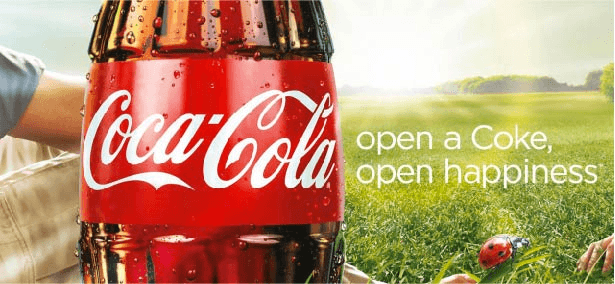A red can with swooping white lettering on its label moves to the center screen, drops of condensation running down its side. “TsssSS kr-POP!” An invisible hand pours a brown, fizzing liquid out of the can, slowly filling up a glass of ice, stopping directly at its brim as it fizzes in the glass, nearly bubbling over. “Ahhh.”
Can you visualize this imagery? Chances are you filled in the blanks and saw a can of Coca-Cola featured center stage in this imaginary advertisement.
In fact, if you’re like 94% of the world’s population, you probably recognize Coca-Cola based on the logo alone (even without the iconic swooping brand name). This instant brand recognition is representative of Coca-Cola’s massive influence on our cultural zeitgeist and shows that the brand, which has been growing its name for over a century, has done so successfully.
But how did Coca-Cola become such a worldwide phenomenon? And what can marketers learn from this soft-drink giant’s massive success on the world stage over the past century plus?
This post will walk you through Coca-Cola’s history, the marketing strategies that made them successful, and what marketers can do to recreate this success for their brand.
Coca-Cola has had a long journey, from a single soda fountain in Atlanta to the globally-recognized brand it is today. How did they get there?
Early Years of Coca-Cola
John Pemberton, an Atlanta pharmacist, created the original Coca-Cola syrup in 1886 in a brass kettle in his backyard. His bookkeeper, who thought two C’s would look nice on advertisements, penned the original flowing Coca-Cola logo at this time, and soon Pemberton was selling an average of nine glasses per day of the carbonated beverage to local Atlantans.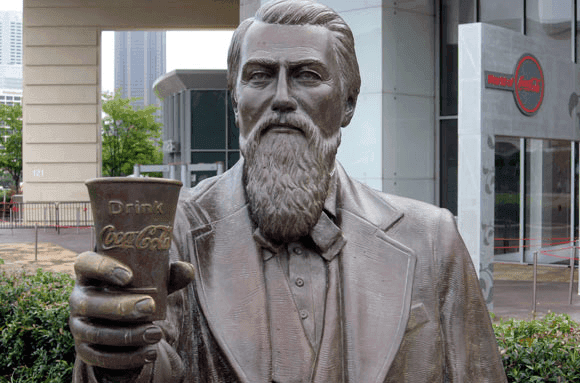
Pemberton, however, would never realize the potential of the product he created. He sold off his business shares to various partners and then, shortly before his death in 1888, sold the rest of his company to Atlanta businessman Asa Candler, who promptly bought the rest of Coca-Cola’s shares and took command of the company.
Under Candler’s control, the Coca-Cola company began investing heavily in marketing and expanding its reach outside the Atlanta area. Some of the earliest advertisements for Coca-Cola were featured in calendars, signage for accredited fountains, and newspapers, where the drink was advertised as “Delicious and Refreshing.”
Between 1890 and 1900, Coca-Cola increased syrup sales by 4,000%, much of which can be attributed to the aggressive marketing tactics overseen by Candler at this time. The company invested heavily in advertising and giving out free samples to thousands of people as the drink moved into new communities, incentivizing new customers to try the beverage and share it via word of mouth.
By 1900 the soft drink was sold in every US state and Canada, and Candler began partnering with local bottling companies to ensure the drink could be distributed as broadly as possible. This franchising model set up the modern soft-drink industry, which still follows the model created by Candler in these early years.
Consistent Growth
Coca-Cola also shifted as the world of soft drinks began to shift from soda fountains at lunch counters and pharmacies to prepackaged beverages.
This shift started with a new bottle for the iconic Cola. This new design was created in a competition by Coca-Cola to find a design that would be easily recognizable and set the brand apart from its competition. The result was the iconic bottle design is still used today.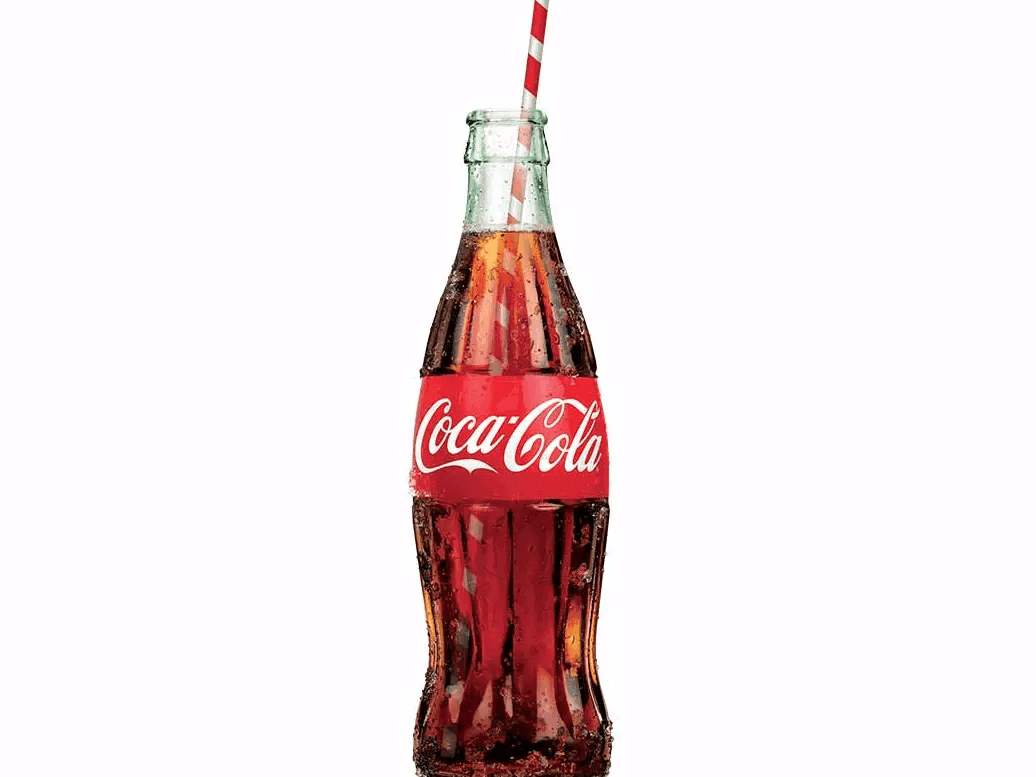
The brand shifted its focus to its thousands of independent bottling companies licensed to sell their product, and the company also began expanding its product lines.
After World War II, the company diversified, purchasing the rights to orange-flavored soft drink Fanta, canned juice company Minute Maid, and creating a new product of their own; lemon-lime flavored Sprite. Around this time, the company first branded itself as Coke, marking a shift from solely focusing on the Coca-Cola product line.
An iconic image from this time is Coca-Cola’s use of Santa Claus to promote its product. While often credited as the originator of Santa Claus, that trope was already in broad use before this time. However, Coke may have influenced the image of Santa as a chubby, red, and white-wearing bearded man.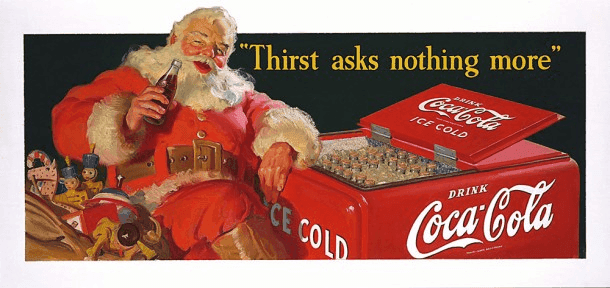
This instance wasn’t the first, nor would it be the last, of Coca-Cola’s powerful advertising campaigns.
A History of Iconic Advertisements
Coca-Cola’s advertising history dates back to 1886, which makes it difficult to pinpoint specific campaigns or advertisements which ultimately set the brand on its eventual path to the domination of the soft drink industry.
From the 1971 hit song “I’d Like to Buy the World a Coke” to the Share a Coke campaign, Coke has had countless sponsorships, commercials, and many more campaigns. Coke has created a brand heavily ingrained in the cultural zeitgeist of the U.S. and the world. And to think, it all started with a simple yet iconic brand.
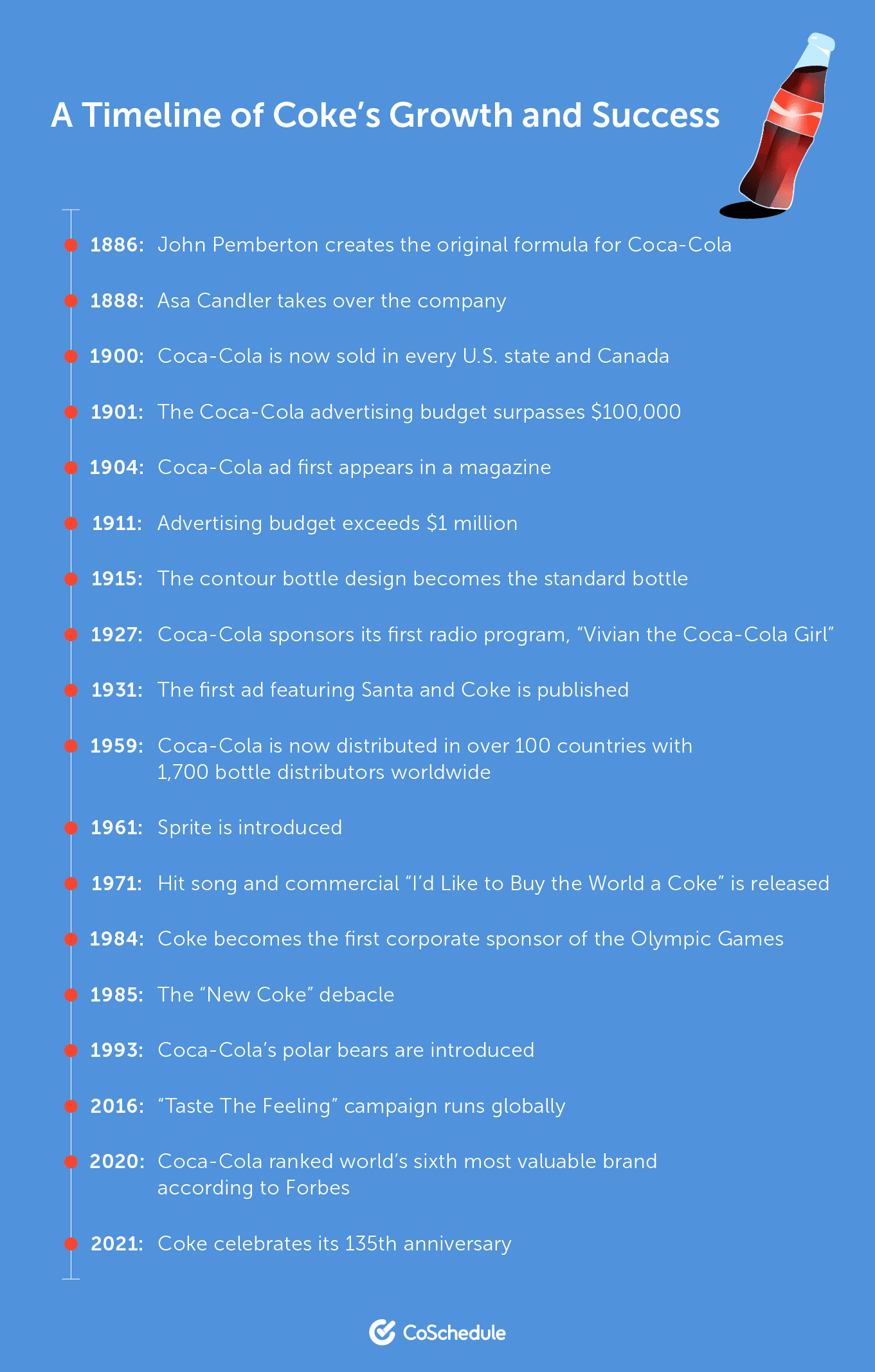
So, the question remains: how has Coca-Cola managed to build and maintain its place as one of the largest brands in the world for over a century?
Branding Like No Other
If there’s one thing that has set Coca-Cola apart from other brands in their industry, it is the ability to grow brand awareness and ingrain itself in the cultural zeitgeist. This awareness didn’t happen overnight, but specific tactics have helped Coca-Cola become one of the biggest brands in the world.
For one, Coke, specifically the Coca-Cola brand, has maintained a consistent visual identity since its founding. The image of white, flowing lettering over a red background is one of the most instantly recognizable worldwide. This visual identity has been supported by years of high-quality, product-centric promotions that put that brand at center stage.
A brand, however, is only effective if it has excellent publicity, and Coca-Cola has done this incredibly well over the decades. Their countless sponsorships, from the Olympics to professional sports leagues to charities, have helped Coke grow its brand by ensuring that the population views them as synonymous with organizations they view positively.
Did you know that, in blind taste tests, people prefer Pepsi over Coca-Cola? However, most people prefer Coca-Cola when shown which brand they’re drinking. People’s positive feelings toward the Coca-Cola brand have created many lifetime customers with strong brand loyalty.
Assuring and Maintaining Product Quality
For many years, Coca-Cola was required to be served at or below 40 degrees Fahrenheit by all registered distributors.
This rule may have worked at soda fountains, but nowadays, Coca-Cola has found other ways to maintain unbeatable product quality. They have rarely strayed from the original formula, mainly due to the significant public outcry which has come every time the recipe has been altered.
By maintaining the quality of their product, Coca-Cola has ensured that their committed brand loyalists stay and build new connections with people who like their product.
Pricing Strategy
For 60+ years, from the 1890s until 1959, a bottle of Coca-Cola cost five cents. No more, no less. This consistent pricing enticed many people to try the soft drink and endeared people to the brand, which, as the world changed, seemed to stay the same as a cheap, quality alternative to other competing beverages.
This pricing strategy obviously couldn’t last forever, and a bottle of Coca-Cola now costs $1.99. But by framing Coca-Cola as a cheap alternative to other soft drinks of their time and maintaining the value people could see in their purchase, Coke grew its brand and created many loyal, happy customers.
Globalization
As many large U.S.-based brands have seen over the years, going global is the only way to take a brand from success to a worldwide phenomenon. Coke realized this reality early on, and its globalization efforts have followed suit.
Coke now operates in over 200 countries and boasts over 500 brands that vary in response to regional tastes and preferences. This massive global presence, which has grown by leaps and bounds over the last 70 years, has enabled Coke to ensure future business success by increasing alongside expanding markets across the globe.
Managing Missteps With Grace
One thing that has placed Coca-Cola above other brands in their industry is its ability to manage marketing and business missteps with grace and ensure its customers recognize that the company is listening to their complaints.
An example of this is the infamous New Coke Debacle of 1985. This is the year, nearly 100 years after Pemberton first created Coca-Cola’s secret recipe, Coke decided to change the formula for their world-famous soft drink.
Coke made this move as their grip on the U.S. soft drink industry was slipping in the early 1980s, hoping to grow their customer base with a new recipe that performed better in blind taste tests. What they didn’t factor into their decision, however, was the loyalty and love for “Old Coke,” which was shared by millions in the U.S.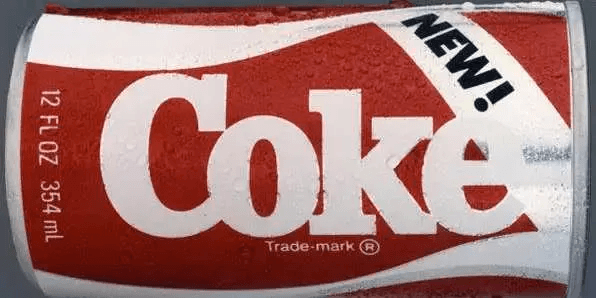
In short, this move did not work. Consumers in the U.S. who grew up with Coca-Cola were outraged by the change, with many hoarding hundreds of cans of the original Coca-Cola formula in their basements.
Within 79 days, the experiment was over, and Coke announced that it was returning to its original recipe.
This event wasn’t a complete catastrophe for the company, however. It made consumers reconsider this soft drink’s role in their lives and better appreciate its place as a cultural icon and refreshing drink, which improved Coca-Cola’s sales numbers.
Talk about a roundabout way to success.
If you’d like a simpler breakdown of Coca-Cola’s marketing, check out Coke’s marketing mix and four Ps.
Product
Coke has a wide product range with many different beverage brands and product lines in their arsenal, with Coca-Cola acting as the core product.
Each product is sold in different-sized packages and has a variety of alternate product lines, like zero sugar or diet varieties.
Price
Coke charges different prices for products depending on segment and market share.
The beverage market consists of a few sellers and many buyers, with Coke and Pepsi holding the dominant position in the market. With this in mind, the two corporations tend to match one another on price points.
Coke also offers discounts for bulk purchases or bundles of different product lines.
Place
Coca-Cola enjoys a vast distribution network supported by its massive network of independent bottlers, allowing the company to distribute its products anywhere it likes.
You can find Coca-Cola in almost any store that sells drinks. Simple as that.
Promotion
Coke aggressively markets its product lines through advertising across multiple mediums and channels, including TV, online ads, sponsorships, etc.
Coca-Cola’s sponsorships include NASCAR, NBA, the Olympics, American Idol, etc. The mass brand awareness created by these wide-reaching marketing and sponsorship campaigns enables Coke to maintain its stranglehold on the beverage market.
Now to the point of this entire post: what can marketers take away from Coca-Cola’s continued success in their brand-building strategies?
1. Brand Identity is a Must-Have
A consistent brand identity has formed the basis for everything Coke has been able to build over the past decade and a half, and this identity doesn’t look like it’s changing anytime soon.
So, how can you create a consistent brand identity for yourself? Here are some of the essential aspects you’ll need:
- Logo
- Color palette
- Typography
- Photography
- Illustration
- Iconography
- Data visualization
If you’re just getting started, begin by creating a basic logo, creating a simple color palette to use across your content and advertising, and designing a typography guide to ensure you have a consistent visual palette across all of your content. You can build out the rest of your brand identity as needed.
2. Prioritize Product Quality
Another reason Coke has maintained its success for so long is that it never sacrificed product quality.
Wherever your marketing priorities lie — content marketing, traditional advertising, etc. — these should never prioritize maintaining and improving your product’s quality. Coca-Cola’s success proves the effectiveness of this strategy; their marketing campaigns are product-centric, and a high-quality product backs them up, increasing consumer trust and brand loyalty.
You may want to create a team dedicated to product quality. This team could go over customer reviews, look for opportunities for improvement, or just ensure that other priorities don’t overtake those of the product team.
3. Implement Strategic Pricing Strategies
One way Coca-Cola grew its popularity over the years was through competitive and strategic pricing strategies, including offering thousands of free samples near its founding and maintaining a low price for years.
Pricing can make or break your product, so you need to be sure that your strategy is getting you results.
A freemium pricing model works well for many companies by enabling them to share the equivalent of a free sample of their product while charging customers for access to premium or advanced features. This is a great way to create brand loyalty and pull more people on board to use your product.
Another pricing strategy you should consider is short-term discounts designed to bring more customers to the table. If you can get them there, chances are good that you can bring them on board at the total price at a later date.
You should also be tracking the results of your pricing strategies. Consider A/B testing different strategies. Then, use that data to inform future strategy so you can continue offering your product for better prices, incentivizing more customers to put their trust in your brand.
4. Actively Explore New Markets
Another aspect of Coca-Cola’s marketing strategy which has contributed to their continued success is their willingness to enter new markets.
Coke has expanded by moving into global markets and growing its reach into nearly every country on Earth, but you don’t need to start shipping your product across the globe to boost your brand’s presence.
Research your competitors’ audiences. Are there any niches they are reaching that you could allocate more resources toward?
Once you find opportunities for your brand to expand its reach into new audiences open to your product, you can capitalize on those markets with powerful marketing strategies that connect with them where they are.
5. Implement Exceptionally Reactive PR
Finally, Coca-Cola has maintained its global presence by responding actively, creating conversations, and leveraging powerful PR to ensure their competitors can’t take advantage of them in the media.
One way you can follow this strategy for your brand is by dedicating resources to public relations, which keeps track of your competitors, customer reviews and feedback, and the public discourse.
This team should be exceptionally reactive and take advantage of newsjacking to keep your brand in the spotlight for positive reasons and react quickly when you’re in the spotlight for negative reasons.
The main priority for this PR team should be to keep your positive brand identity intact and take advantage of opportunities to put your brand in front of the public in a positive light.
Remember: Agile marketing wins. Be ready to shift your strategy based on feedback and results, and don’t stop until you see massive success.
1. Share A Coke
Coca-Cola is famous for many advertisements that have helped them dominate the marketing world. Their Share A Coke advertisement encouraged purchasing a Coke for your friends, family, or anyone because everyone loves a Coke.
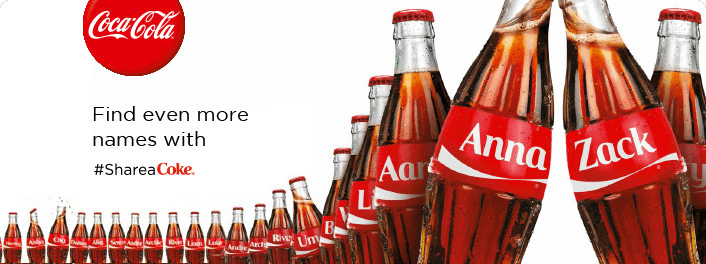
2. I’d Like To Buy The World A Coke
Coke’s famous 1971 advertisement with people of all nationalities joined together singing, “I’d Like To Buy The World A Coke.” Some remember this advertisement as a cultural reset. It promoted peace and harmony among all nationalities and showed that there’s one thing they all agree on, they all love Coke.
3. Playing To The Times
One major part of Coke’s advertisements is they know how to play to the times. For example, this advertisement uses the idea of Elvis to create nostalgia in their audience to crave the taste of Original Coca-Cola. This advertisement accomplishes a sense of stability for the audience and assures them that while most things change and evolve, the Original Coke is forever.
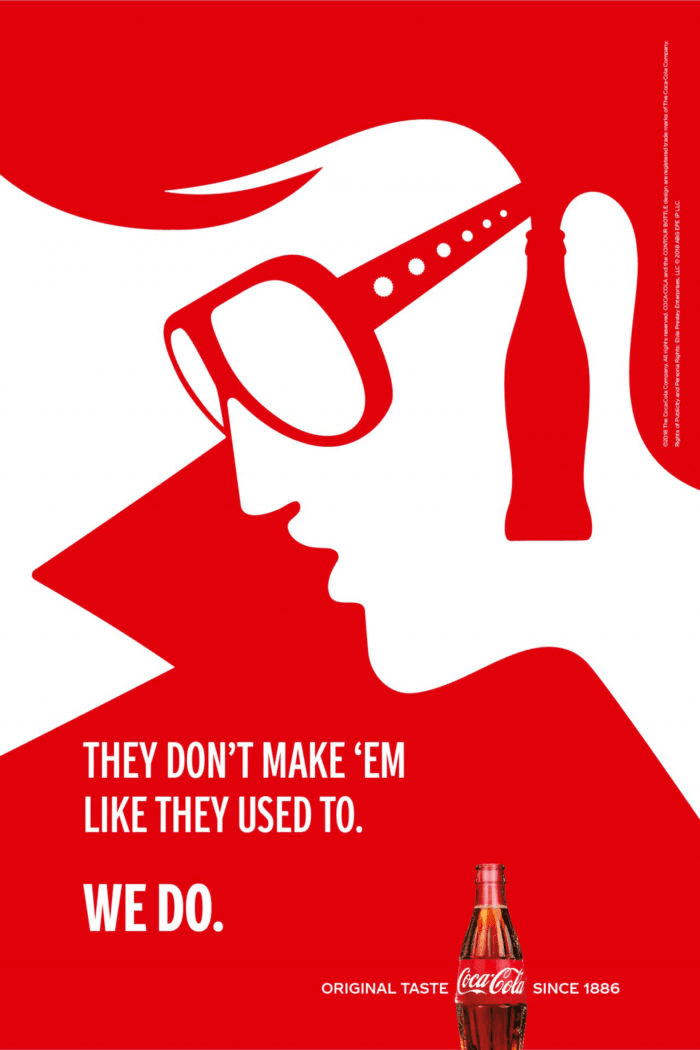
4. Capitalize On History
A theme throughout Coke’s famous advertisements is that they know how to capitalize on significant historical moments. This advertisement featuring Amelia Earhart and a catchy tagline promotes women and is a major moment for the future of flights.
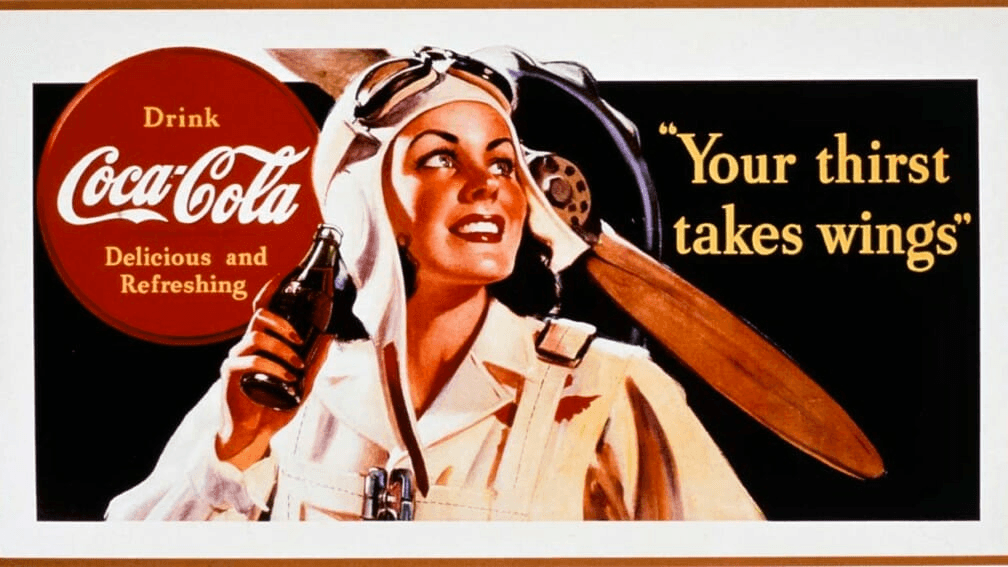
5. Open A Coke, Open Happiness
Coke’s global advertisement, “Open a Coke, open happiness.” promoted a positive message about Coke representing all things good and happy. This advertisement continued to build a positive brand image for Coke and was a successful global ad campaign.
